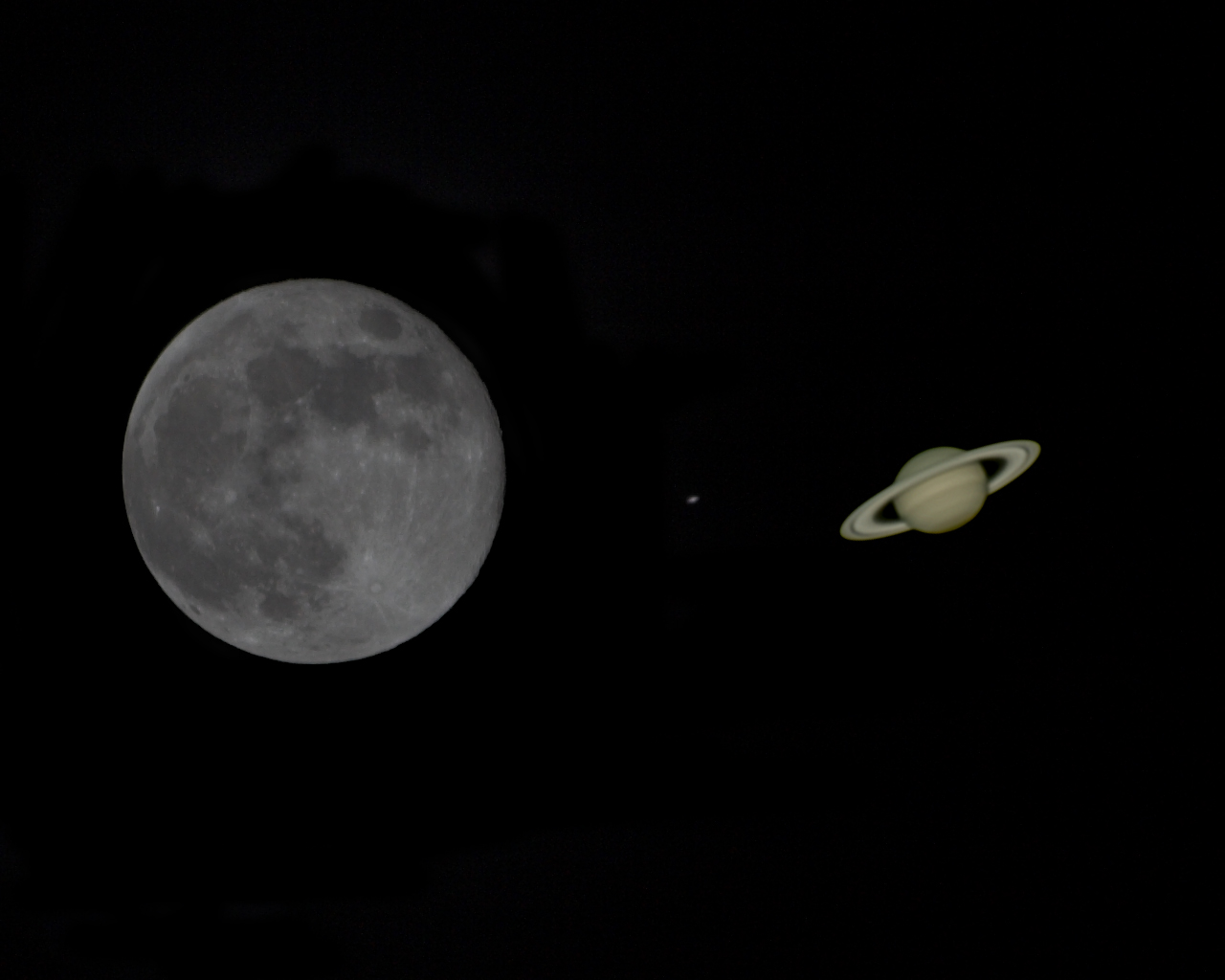A mesmerizing performance is going to take place in the night sky, and it will take place amidst the celestial ballet that is our solar system. Skywatchers will have a one-of-a-kind opportunity to witness an incredible rendezvous between the moon of Earth and the majestic ringed planet Saturn during the course of the next two nights. This heavenly encounter will be visible in the night sky.
On August 2nd and 3rd, the moon and Saturn will be locked in an intimate cosmic embrace. These dates fall on Wednesday and Thursday of this week. As these two bright objects approach one another in the cosmos, those who have an interest in astronomy, whether they have any experience or not, are in for a real treat.
As the twilight fades and darkness covers the heavens, sharp observers will have the opportunity to see Saturn positioned slightly above and to the left of the moon. Saturn will be in this position when the sky is completely dark. When viewed from New York City, this mesmerizing show will begin to take place at approximately 9:45 p.m. Eastern Time (or 01:45 GMT on August 3rd). The two individuals will reach their zenith at approximately 4:45 in the morning on the following day, producing a stunning scene set against the background of the universe.
On the other hand, the most exciting part of this heavenly encounter will take place on the evening of Thursday, August 3rd. During this conjunction, the moon will gracefully pass a mere 2 degrees below Saturn as it is waning. The moon has been waning for 17 days. A conjunction is a heavenly event that occurs when two or more celestial bodies share the same right ascension in the sky over the Earth. This phenomenon is analogous to a celestial longitude. Shortly after 9:16 p.m. Eastern Daylight Time (or 0116 GMT on August 4), inhabitants of New York City will be treated to the ethereal sight as darkness descends upon the city that never sleeps.
The moon and Saturn will continue their dance throughout the night, and they will continue to be visible in the night sky until the early morning hours of Friday, August 4th, at roughly 8:04 a.m. Eastern Daylight Time (1204 GMT), at which point they will say goodbye to the night sky.
This mesmerizing spectacle will be an absolutely mesmerizing sight to witness for those who are armed with binoculars. Binoculars, on the other hand, will give you a panoramic view of this cosmic tango, whilst telescopes might not be able to capture both in the same frame due to the distance between them.
A cursory examination of the magnitudes of these heavenly partners provides some fascinating information. The moon, which has a magnitude of -12.7 (with the prefix minus being reserved for very brilliant objects), would easily outshine Saturn, which has a magnitude that is far lower at 0.5. Despite this, from our vantage point here on Earth, the moon will appear to be a significantly larger object than Saturn due to the larger size that we believe it to be.
The cosmic gap between these two entities can be seen when their sizes and volumes are compared to one another. Saturn’s enormous circumference, which spans 72,400 miles (116,500 kilometers), completely dwarfs the moon’s relatively modest girth, which measures 2,159 miles (3,475 kilometers). This contrast extends to the sizes of both planets as well; although Saturn has the capacity to house an astounding 764 Earths inside its grandeur, our planet would only need a pitiful 50 moons to be completely engulfed by its satellites.
The proximity of the moon to Earth is the key to understanding why it appears to be much larger than it actually is. Saturn is a startling 746 million miles (1.2 billion kilometers) distant at its closest approach, which is a far greater distance than the average distance between the moon and Earth, which is 238,855 miles (384,400 kilometers). The usual distance between the moon and Earth is 238,855 miles (384,400 kilometers). To put this into perspective, during Saturn’s closest approach, the distance between our planet and Saturn is sufficient to accommodate almost 3,123 stackings of the Earth and its moon.
When the immensity of the solar system is taken into consideration, it is essential to keep in mind that phrases like “close approach” in astronomical contexts are misleading. The apparent closeness of the moon and Saturn is nothing more than an optical illusion caused by the perspective we have from Earth. In point of fact, they continue to be distant neighbors in the neighborhood of the cosmos.
This cosmic encounter is a true spectacle that shows the mesmerizing choreography of our solar system, so make sure you don’t miss it! In the event that you are eager to make the most of this occasion, our guides to telescopes and binoculars will be able to point you in the proper direction. Our in-depth instructions on photographing the moon, planets, and night sky offer astronomy enthusiasts a wealth of information that can be of great use in pursuing their passion for astrophotography. Therefore, get ready to be fascinated by the moon and Saturn as they dance an ethereal waltz through the heavens, and be sure to have your gear ready.
![]()
